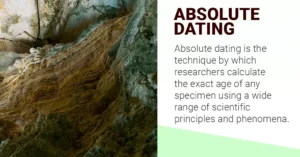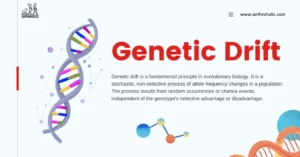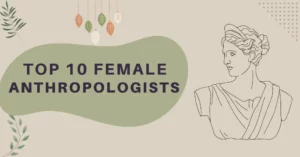AI Answer Evaluation Platform Live Now. Try Free Answer Evaluation Now
Lewis Binford
Lewis Binford was a transformative figure in modern archaeology, widely credited as the founder of “New Archaeology”, or processual archaeology. A powerful advocate for turning archaeology into a rigorous science, Binford revolutionized the field by introducing new theoretical frameworks, data-driven methods, and a commitment to understanding human behavior through material remains. His work challenged old typological approaches and shifted archaeology from artifact description to cultural explanation.

Born in 1931 in Norfolk, Virginia, Binford rose from modest beginnings and military service to become one of the most influential anthropologists of the 20th century. His legacy is not just in the theories he pioneered-like middle-range theory or ethnoarchaeology-but also in the generations of scholars he trained and inspired. Whether working with Ice Age hunter-gatherer assemblages or Inuit subsistence strategies, Binford consistently asked deeper questions about what the archaeological record could reveal about human adaptation, evolution, and culture.
Both admired and debated, Binford’s impact on the discipline remains enduring. His insistence that archaeology be grounded in science fundamentally redefined how researchers across the globe study the past.
Early Life and Education
Lewis Roberts Binford was born on November 21, 1931, in Norfolk, Virginia, and grew up during the Great Depression. His early years were shaped by a strong interest in the natural world and mechanical systems, traits that later influenced his analytical approach to archaeology. Originally enrolling at Virginia Polytechnic Institute (now Virginia Tech) to study forestry, Binford left before completing his degree and enlisted in the U.S. Army, serving a tour of duty in Okinawa during the post-World War II period.
After his military service, Binford returned to education with renewed focus, enrolling at the University of North Carolina, where he completed his B.A. in Anthropology in 1957. His exposure to anthropology at UNC sparked a deep interest in understanding human behavior through empirical evidence-a theme that would dominate his entire career.
Binford then pursued graduate studies at the University of Michigan, one of the leading centers for anthropology at the time. He earned his M.A. in 1958, and ultimately completed his Ph.D. in 1964, with a dissertation that laid the groundwork for his revolutionary critiques of traditional archaeological methods. During his graduate years, he developed early versions of what would become known as “New Archaeology”-a scientifically driven approach emphasizing explanatory models over descriptive typologies.
This educational foundation, combining postwar pragmatism with intellectual rigor, positioned Binford to challenge entrenched academic norms and reorient the goals of archaeological research for decades to come.
Academic Career and Theoretical Contributions
Lewis Binford began his academic career in the early 1960s with appointments at leading U.S. institutions, including the University of Chicago, UCLA, and eventually the University of New Mexico, where he spent over two decades and solidified his role as a key figure in American archaeology. In 1991, he joined Southern Methodist University in Dallas, Texas, where he remained until retirement, ultimately holding the title of University Distinguished Professor Emeritus.
It was in the 1960s that Binford launched his most influential campaign: the promotion of what he termed “New Archaeology”-later widely known as processual archaeology. In a series of landmark publications, including his 1962 paper Archaeology as Anthropology, and the 1968 co-edited volume New Perspectives in Archaeology, Binford argued that archaeology should not merely classify artifacts but explain cultural processes through scientific reasoning.
He introduced several powerful theoretical tools, most notably:
- Middle-range theory: bridging the gap between static archaeological data and dynamic human behavior.
- Systems theory: modeling cultures as adaptive systems responding to environmental and social pressures.
- Ethnoarchaeology: using observations of living societies to infer patterns in the archaeological record.
Binford was deeply influenced by ecological and evolutionary theory, and he saw archaeology as a discipline that should engage with universal laws of human behavior, much like the natural sciences. This marked a radical departure from the culture-historical approaches that dominated mid-20th century archaeology, which focused on artifact typologies and chronological sequences without explaining why cultural change occurred.
Though processualism dominated archaeology for decades, it was not without criticism. Later generations of scholars challenged Binford’s emphasis on environmental determinism and scientific positivism, leading to the rise of post-processual archaeology in the 1980s. Yet, even his critics acknowledged that Binford’s intellectual rigor and theoretical innovation had irreversibly transformed the field.
Fieldwork, Publications, and Legacy
While Lewis Binford’s theoretical work reshaped archaeology, his field research and publications demonstrated the practical power of his ideas. Among his most influential contributions was his ethnoarchaeological work with the Nunamiut people of Alaska in the late 1960s and early 1970s. Living among this semi-nomadic Inuit group, Binford meticulously recorded patterns of caribou hunting, butchery, and bone discard. These observations became the basis for understanding how specific human behaviors leave behind particular kinds of archaeological traces-a field now known as taphonomy.
This research culminated in his widely acclaimed 1978 book, Nunamiut Ethnoarchaeology, a foundational text that set the standard for integrating ethnography and archaeology. Through this and related studies, Binford showed how archaeologists could reconstruct human behavior by linking material remains with observable action.
Binford was equally impactful through his prolific scholarly writing. Some of his most cited works include:
- Archaeology as Anthropology (1962) – called for theoretical rigor in archaeology
- New Perspectives in Archaeology (1968) – co-edited with then-wife Sally Binford, helped launch the New Archaeology movement
- Nunamiut Ethnoarchaeology (1978) – pioneering fieldwork combining ethnography and archaeology
- Bones: Ancient Men and Modern Myths (1981) – a popular and critical examination of misconceptions in prehistoric archaeology
- Debating Archaeology (1989) and Constructing Frames of Reference (2001) – advanced theoretical critiques and frameworks
Binford’s legacy also rests on his influence as a teacher and public intellectual. He mentored numerous students who became major figures in archaeology and helped shift the field toward more scientific, testable models of human behavior. He often engaged in lively debates with other archaeologists, never shying away from critique or controversy-qualities that energized the discipline.
Even as post-processualism gained ground in the late 20th century, Binford’s work remained foundational. His call for archaeology as a science continues to shape methods in excavation, analysis, and interpretation across the globe.
References
- Nunamiut Ethnoarchaeology – Google Books
Describes Binford’s fieldwork documenting caribou hunting and butchery among the Nunamiut
https://www.google.com/books/about/Nunamiut_Ethnoarchaeology.html - Science.org Obituary – Lewis R. Binford (1931–2011)
Summary of his scientific influence, appointments, and method innovations
https://www.science.org/doi/10.1126/science.1207836 - SMU Obituary – “Lewis Binford left legacy of change, innovation”
Covers his professorship at SMU and honors, including National Academy of Sciences membership
https://www.smu.edu/news/archives/2011/lewis-binford-obituary-13april2011




